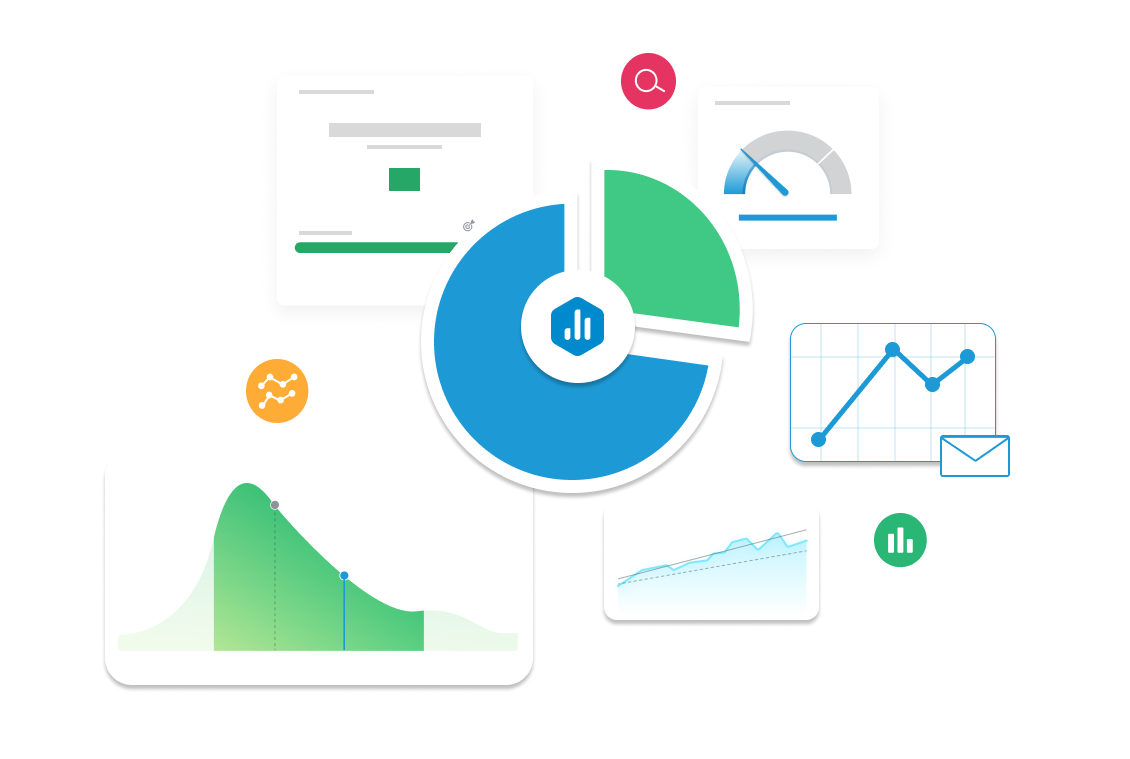Bounce Rate
Bounce rate metrics the percentage of users who visit a website and leave after seeing the landing page without any further interaction. A higher bounce rate indicates lack of user engagement which stems from various issues like poor content, content inappropriate to user needs, or substandard load speeds. Therefore, monitoring and optimizing bounce rate is a priority.

| Category |
Marketing |
|---|---|
| Type |
Lagging indicator |
| Calculation |
Bounce Rate = (Single-page sessions / Total sessions) × 100 |
| Measure |
Bounce rate indicates the percentage of visitors who leave a website without interacting beyond the landing page. A high bounce rate may signal issues like slow load times, poor user experience, or irrelevant content. |
| Data Sources: |
Google Analytics, Adobe Analytics, Matomo, Hotjar, Crazy Egg |
| Frequency |
Real-time, Daily, Weekly, Monthly |
Example target
Reduce bounce rate by 15% in Q2 by improving page load speed, optimizing content, and enhancing user experience.
Example Reports Use Case
Bounce rate helps marketers assess website performance and user engagement. A UX designer may analyze bounce rates to improve site navigation, while a content strategist may optimize landing pages to better align with user intent and reduce exits.
What is Bounce Rate
Bounce rate is a website performance metric that shows the percentage of visitors who land on a page and leave without taking any further action—like clicking a link, filling out a form, or visiting another page. In simple terms, it tells you how many people “bounce” away after viewing just one page.
This KPI is important because it helps marketers and business leaders understand how engaging and relevant a webpage is. A high bounce rate might suggest that your content isn’t meeting visitor expectations or that the page is confusing, slow, or poorly targeted.
The basic formula is:
Bounce Rate = (Single-Page Sessions ÷ Total Sessions) × 100
For example, if 1,000 people visit your site and 600 leave without interacting, your bounce rate is 60%. Bounce rate is especially useful for improving landing pages, blog content, and user experience to keep visitors engaged and moving deeper into your site.
How to Calculate Bounce Rate Variants
Bounce rate is usually calculated with this formula:
Bounce Rate = (Single-Page Sessions ÷ Total Sessions) × 100
This gives you the percentage of visitors who left your site after viewing just one page. But depending on your goals, there are a few helpful variations:
1. Monthly or Yearly Bounce Rate
Track bounce rate by month or year to spot trends.
Example: If in March, you had 1,200 sessions and 600 were single-page visits:
Bounce Rate = (600 ÷ 1,200) × 100 = 50%
2. Bounce Rate by Channel
This shows how different traffic sources perform.
Example:
-
Social Media: 70% bounce rate
-
Email: 40% bounce rate
This helps you see which channels bring more engaged visitors.
3. Bounce Rate by Page
Check how individual pages perform—great for optimizing landing pages or blog posts.
Why Bounce Rate Matters
Bounce rate is a key metric that helps businesses understand how well their website or landing pages engage visitors. If users are leaving without taking action—like clicking, reading more, or converting—it could signal problems with content, design, or audience targeting. A high bounce rate often means lost opportunities, while a lower bounce rate usually points to stronger engagement and a better user experience.
Tracking bounce rate supports goals like growth, conversion optimization, and customer satisfaction. For example, if a product page has a 75% bounce rate, it might need better visuals, faster loading times, or clearer messaging. Monitoring this KPI helps marketers refine content, sales teams assess funnel effectiveness, and executives make data-driven decisions on digital strategy.
It’s especially useful when combined with other metrics like conversion rate or time on page, giving a fuller picture of what’s working—and what’s not—so you can improve performance across the customer journey.
Related KPIs to Bounce Rate
Bounce rate connects closely with other engagement and conversion metrics, helping paint a fuller picture of website performance.
Bounce Rate vs. Time on Page
A high bounce rate paired with low time on page usually means visitors aren’t finding value. But if time on page is high, they may be reading content fully before leaving—especially on blog posts. Looking at both helps avoid false alarms.
Bounce Rate vs. Conversion Rate
If your bounce rate is high and your conversion rate is low, it’s a red flag—visitors are leaving before taking action. Improving page design or call-to-actions can help reduce bounce rate and boost conversions.
Bounce Rate vs. Traffic Source
Some traffic sources naturally have higher bounce rates (like social media). Segmenting by channel helps you understand which sources drive the most engaged users.
Together, these KPIs help marketers, UX teams, and executives improve content, targeting, and site experience to drive better results.



